The concert hall of Széchenyi István University, the unique space of the former synagogue, is home to the exhibition „Art and Faith”, which pressents the works of the Herend Porcelain Manufactory to the public. The special exhibition will be open until mid-November.
For the second time in six months, Széchenyi István University will host thematic exhibitions of the Herend Porcelain Manufactory. In the spring, visitors were able to view the world-famous company’s masterpieces at the Albert Kázmér Mosonmagyaróvár Faculty in the castle of Mosonmagyaróvár, and this time the exhibition is held in the University Concert Hall, in the former synagogue, under the title „Art and Faith”. The latter will not only showcase the long-established firm’s collection of Judaica, but also a lavish table setting that presents the story of the evolution of perhaps the most famous decoration of all, the Victoria pattern. The pattern was first commissioned by Britain’s Queen Victoria at the Great Exhibition in 1851. All this is completed by a bravura piece – an ornamental plate painted with a Rotschild pattern.

Dr Eszter Lukács, Vice-President for International Affairs and Strategic Relations of Széchenyi István University and Dr Attila Simon, CEO of Herend Porcelain Manufactory Ltd. opened the exhibition (Photo: Csaba Krizsán)
At the opening ceremony on 18 September, Dr Eszter Lukács, Vice-President for International Affairs and Strategic Relations of Széchenyi István University recalled that Herend Porcelain Manufactory Ltd. has a close relationship with the House of Jewish Excellence in Balatonfüred, where it presented an exhibition entitled „Our National Value” to the public in the summer. In July, Széchenyi University, in partnership with the Balatonfüred institution, opened Hungary’s second Jewish Excellence Exhibition in the former synagogue, where visitors can discover the careers of more than 400 scientists, artists and sportsmen of Jewish origin, from Albert Einstein to Mark Spitz and Miklós Radnóti. „This interconnectedness gave us the idea for the exhibition of stunning porcelain works,” she said, adding that the atmosphere of the works is enhanced by the ambience of the building. „Our University is proud to have taken possession of the facility after its renovation in 2006, and it has been a careful owner ever since. The building, which has been raised as a temple of faith, has become a home of education, providing a place for the high quality music courses of our Faculty of Arts, while at the same time enriching the artistic values of not only the University but also Győr as a sanctuary of culture,” she underlined.
Dr Eszter Lukács also spoke about the University’s long-standing partnership with the Herend Porcelain Manufactory. „The long-established company strives to promote Hungarian culture throughout the world with its world-class products. Our mission is similar: in addition to our outstanding educational and research and development activities, we want to contribute to the preservation and enrichment of our common values. Our quality is reflected in our rankings: our University is included in seven European, subject and world rankings of the two largest international higher education rating organisations, Quacquarelli Symonds and Times Higher Education. At the same time, we are committed to achieving world-class excellence not only in education and science, but also in other areas, such as the arts through music and design, our health care businesses, health technology innovations inspired by the world’s best university, MIT Catalyst Europe, our sports teams and our restaurant network, which now has 18 units,” she said, thanking Dr Attila Simon, for his contribution to the institution’s goals as both an educator and a corporate partner.
In his speech, Dr Attila Simon said that their cultural mission is to take the values of Herend porcelain to the world and to put them down roots. He added that the success of the Manufactory over the last two hundred years has been the result of a combination of many factors. World exhibitions, great traditions, strong product development, and the secret recipes of porcelain raw materials and more than 870 colours have all contributed to the company’s enduring reputation.
„Even though we have 16,000 white moulds, four thousand painted samples and around 64 million different works, we still produce 300-400 new works a year within our walls,” he said, citing a number of interesting figures. He also explained that for them, every exhibition is a celebration. „It is a celebration of porcelain artists, porcelain-loving public, patience and perseverance, and of porcelain in all capital letters, which for centuries has represented and linked people, cities and geographical regions,” the CEO said. – “I thank Széchenyi István University for giving Herend an opportunity. I am glad that there are partners who are willing to pass on the values to future generations.”

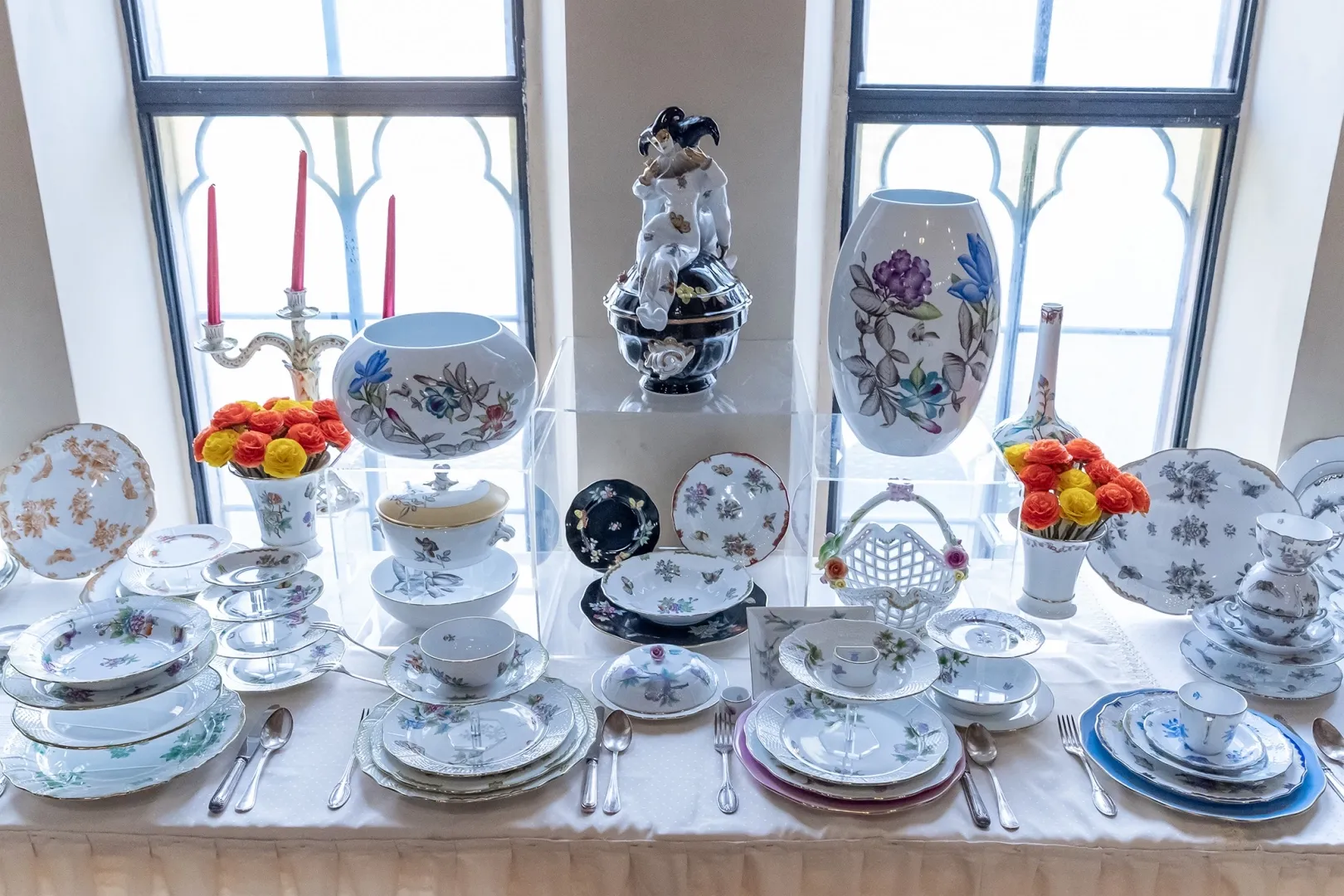
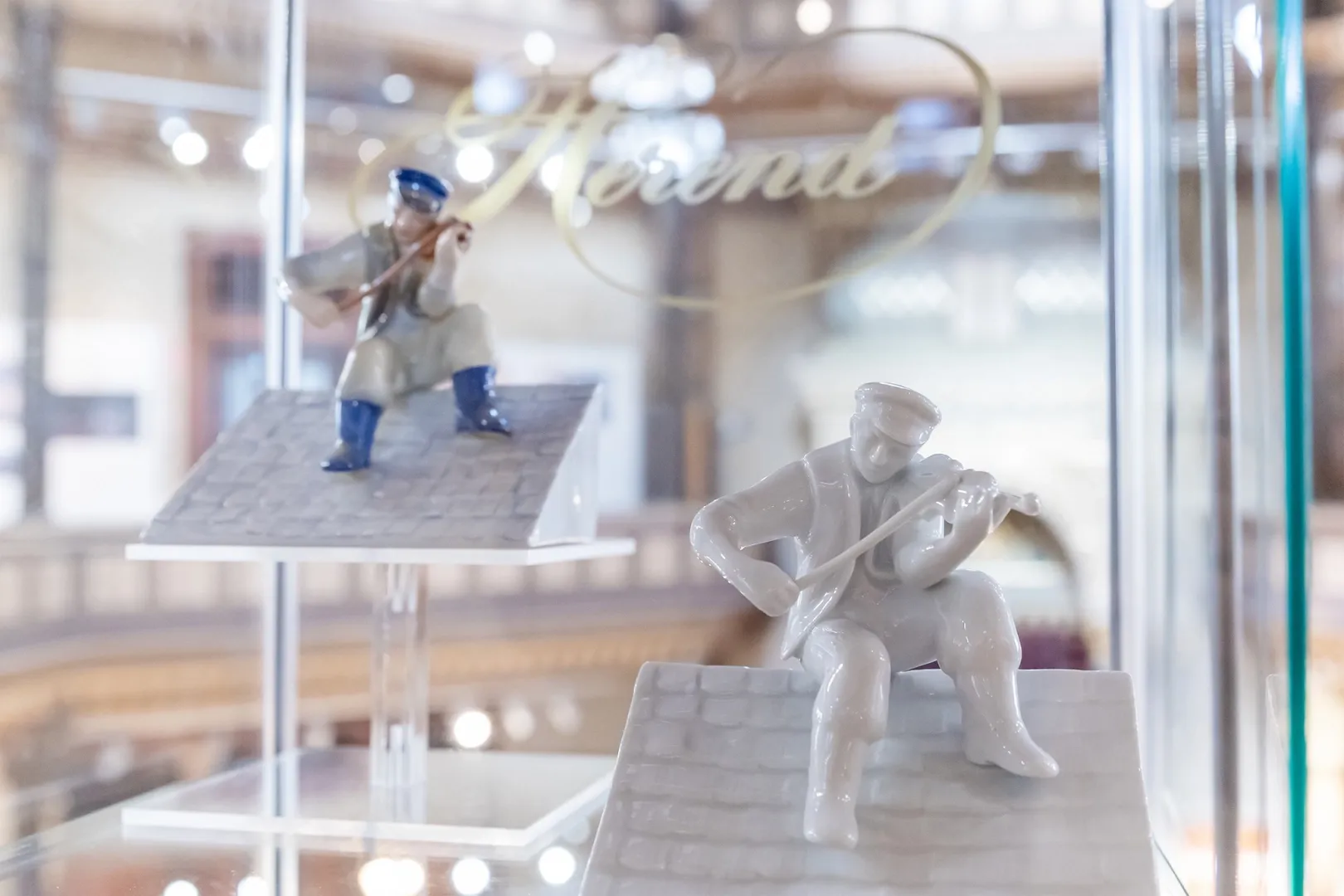


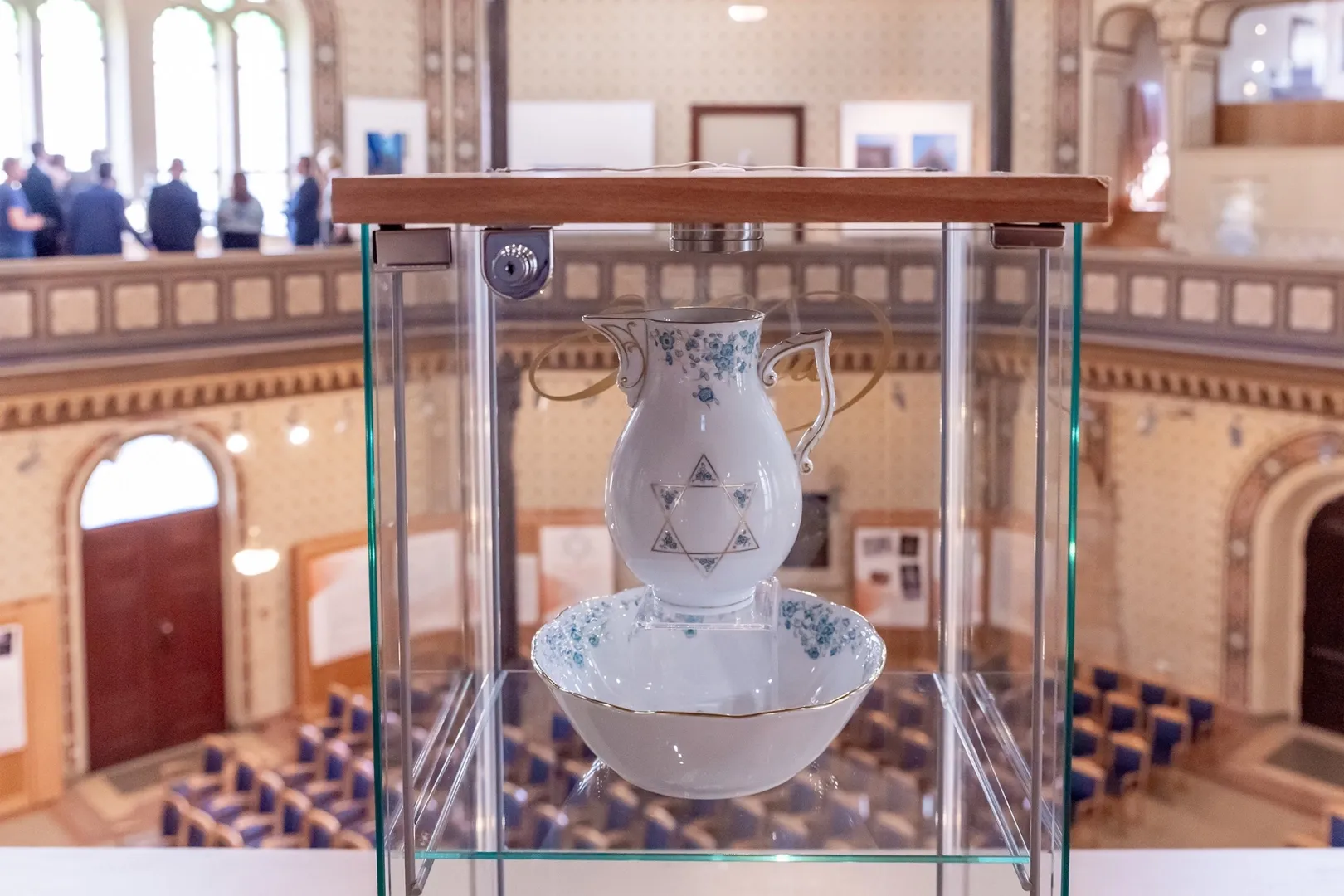
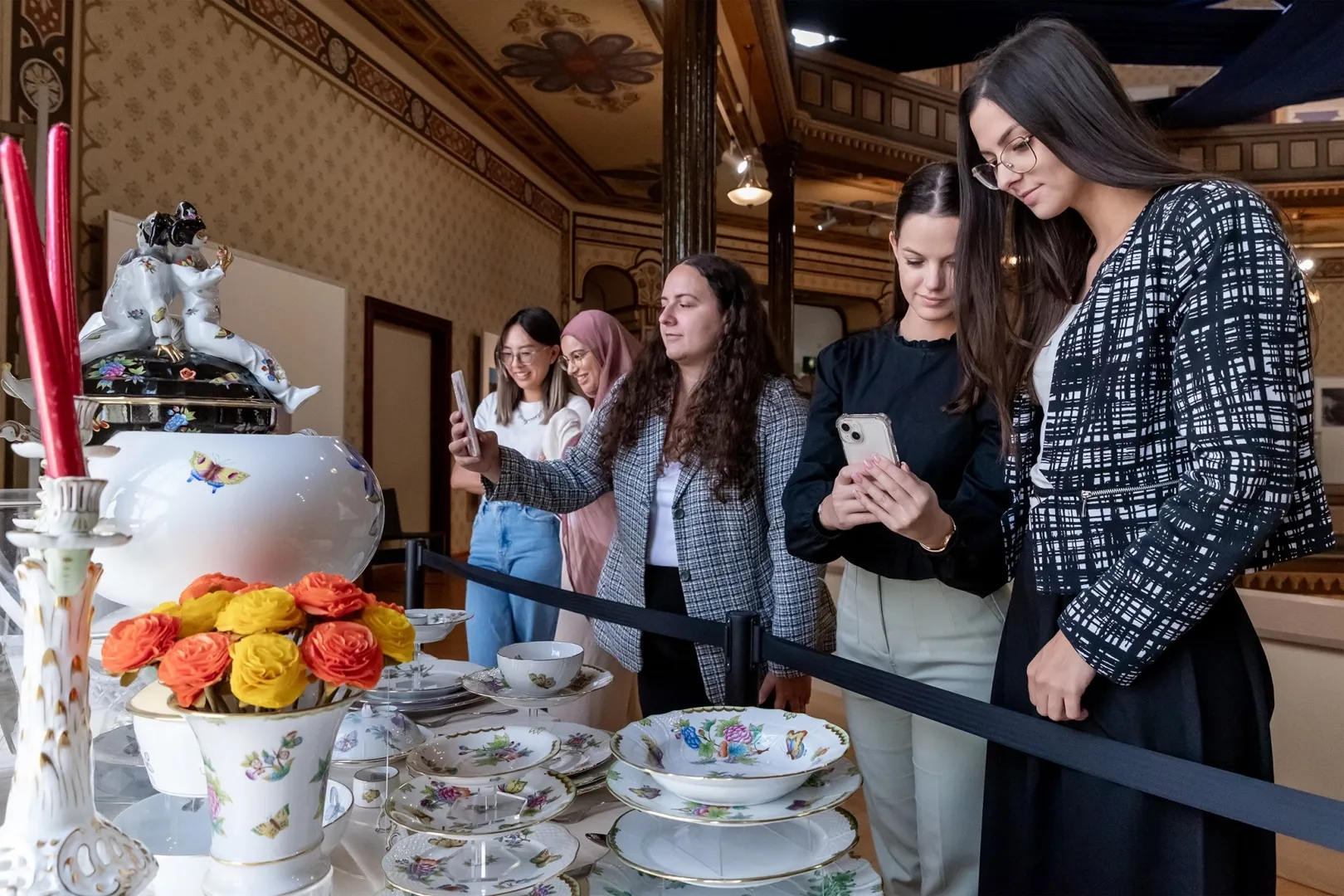
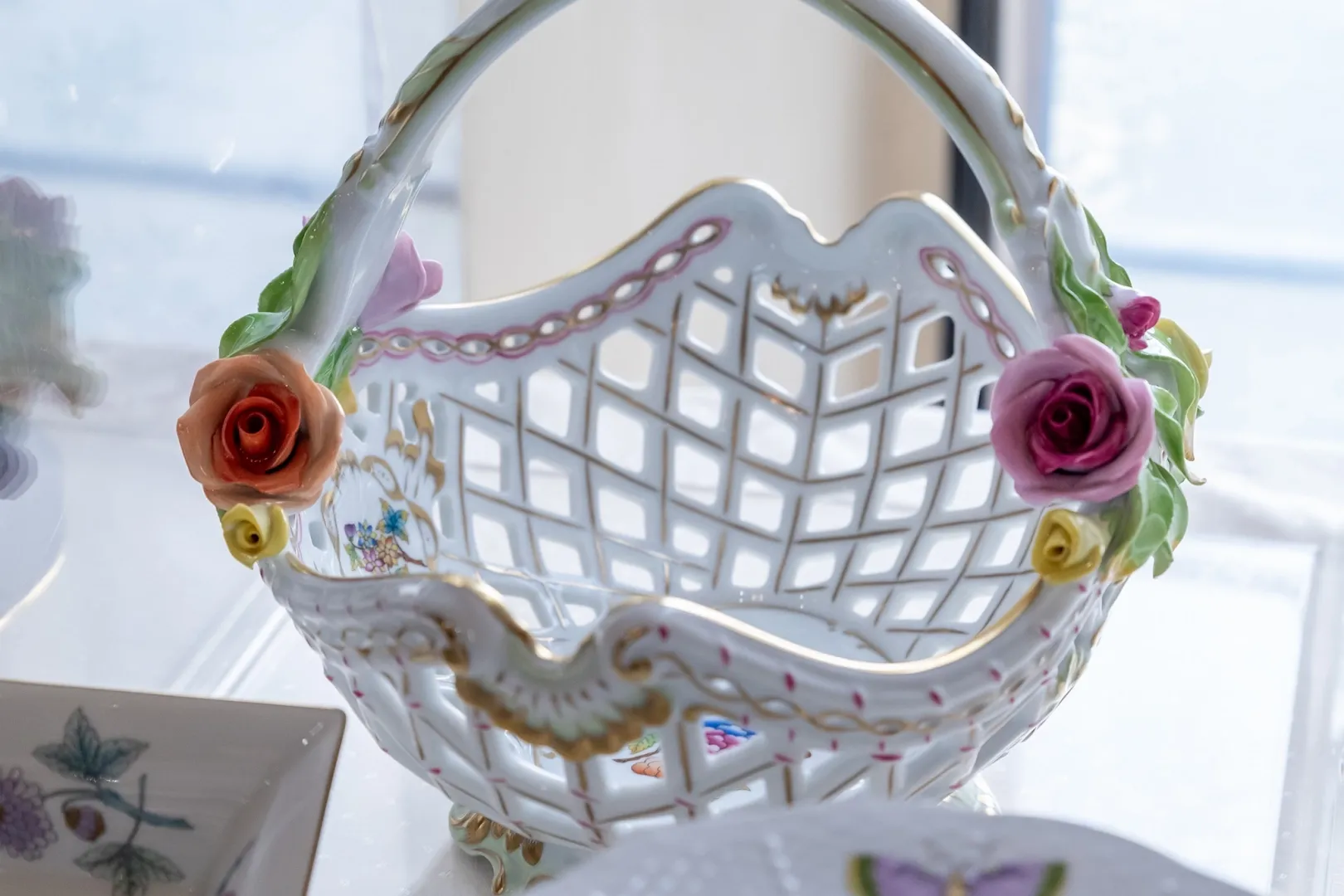
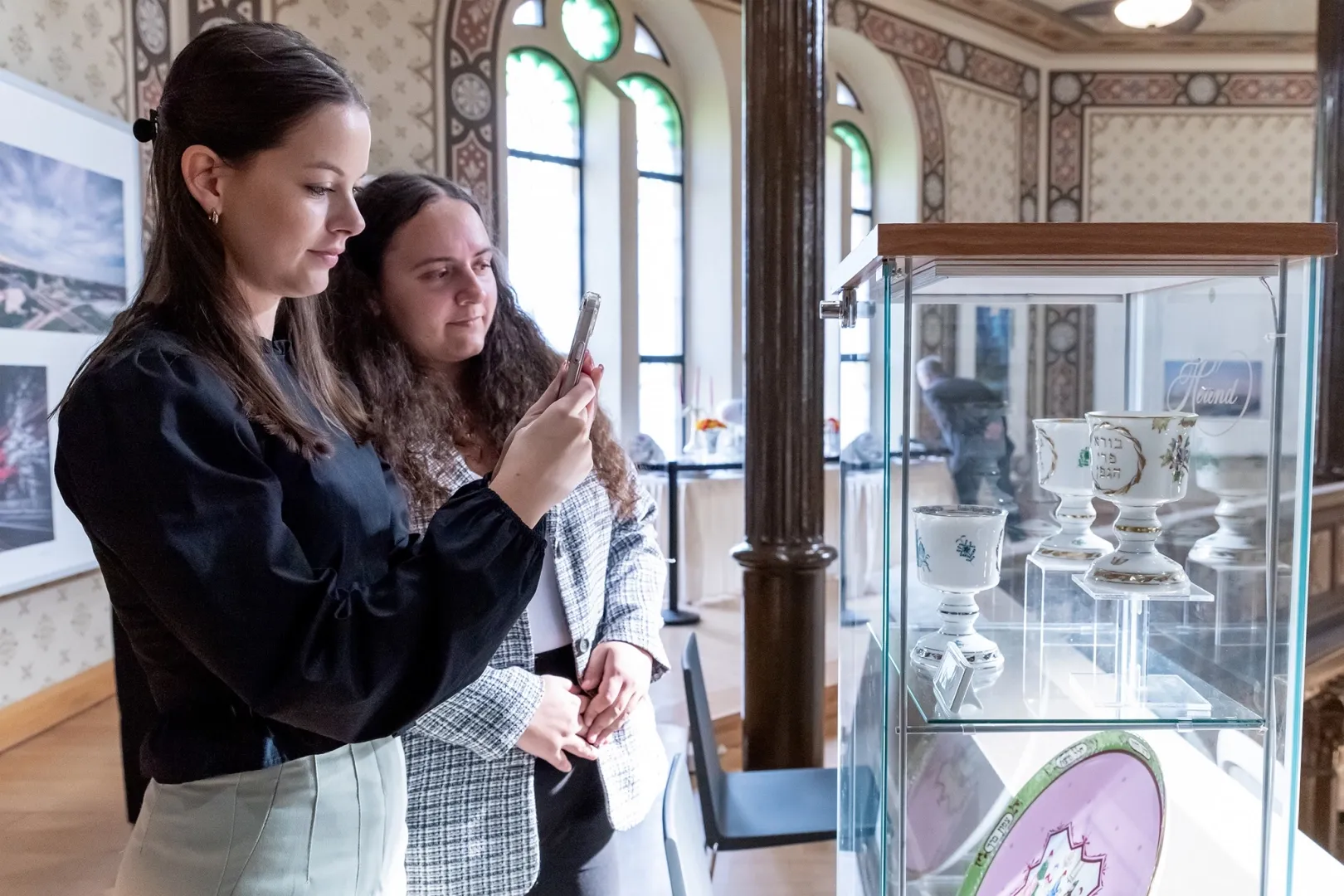
Beautiful porcelain works on display (Photos: András Adorján)






